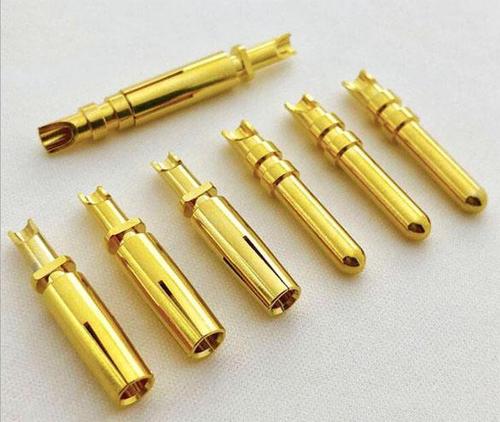Time:2025-10-10 Views:1 source:News

The gold plating thickness of Pogopin probes is a critical parameter that significantly impacts the performance, durability, and reliability of these electrical connectors. Gold is widely used in the plating of Pogopin probes due to its excellent electrical conductivity, corrosion resistance, and low - contact resistance properties.
Typically, the gold plating thickness for Pogopin probes ranges from 0.05 microns to 5 microns, depending on the specific application requirements. For consumer electronics products where cost - effectiveness is a major concern and the probes are not exposed to extremely harsh environments, a thinner gold plating layer, usually around 0.05 - 0.5 microns, may be sufficient. This thinner layer still provides adequate protection against oxidation and ensures good electrical contact during normal operation.
In contrast, for high - end industrial applications, automotive electronics, and aerospace fields, where the probes need to withstand more severe conditions such as high humidity, high temperature, and mechanical vibrations, a thicker gold plating layer, often in the range of 1 - 5 microns, is preferred. A thicker gold plating layer offers enhanced corrosion resistance, reducing the risk of electrical failures caused by the degradation of the plating due to environmental factors. It also helps maintain stable contact resistance over a longer period, which is crucial for the reliable operation of electrical systems in these demanding environments.
The gold plating thickness also affects the wear resistance of Pogopin probes. When the probes are subjected to frequent mating and unmating operations, a thicker gold layer can better resist abrasion, preventing the underlying base metal from being exposed. Once the base metal is exposed, it is more prone to oxidation and corrosion, which can lead to an increase in contact resistance and potential connection failures.
However, increasing the gold plating thickness also comes with increased costs. Gold is a precious metal, and a thicker plating layer means higher material and production costs. Therefore, manufacturers need to carefully balance the required performance of the Pogopin probes with cost considerations when determining the appropriate gold plating thickness for different products. Additionally, strict quality control measures are implemented during the plating process to ensure that the gold plating thickness meets the specified requirements, as any deviation can have a significant impact on the overall performance of the Pogopin probes.
Read recommendations:
High precision manufacturing of magnetic connectors